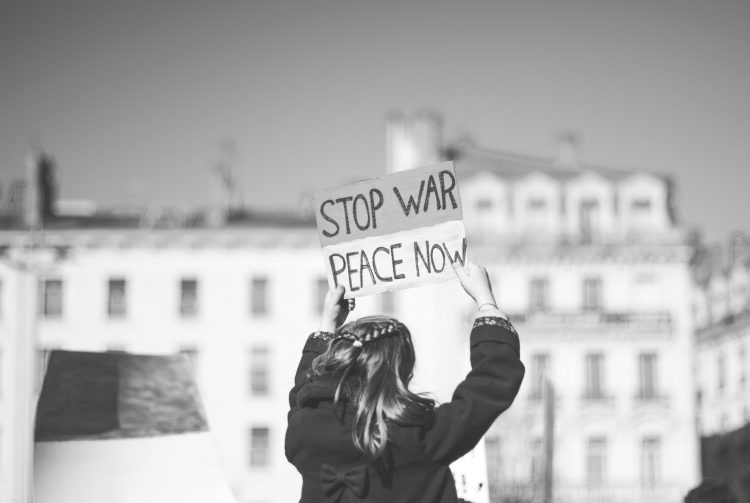- 16 Apr, 2023
- 0
- Tom H. Hastings
- PeaceVoice
How to Convert a War to Peace
How to Convert a War to Peace
by Tom H. Hastings
861 words
Many attempts have been made to stop war.
Many fail.
Who has done it successfully and what can they teach us?
· The people of the Philippines stopped a civil war that looked unstoppable. When? In February of 1986. How? Some nuns and other Filipinx activists did about a decade of nonviolence trainings and community organizing with an idea of replacing the increasingly dictatorial Ferdinand Marcos. When Marcos had his primary rival, Benigno Aquino, assassinated, the people were angry. When they got a chance to vote for his widow, Cory Aquino, they knew that she won but Marcos attempted to steal the election. This precipitated a general strike and a breakaway portion of the armed forces. As the tanks from the rebel army rolled down the Epifanio de Los Santos Avenue in Manila toward the army of tanks surrounding the Presidential palace, the Filipina nuns told Cardinal Jamie Sin to get on Radio Veritas and tell the people, “It’s time. Come out to the EDSA.” People were ready, came out by the tens of thousands, and interposed for days between two armies. They stopped an “inevitable” civil war and regained their democracy.
· But what about a war in actual shooting progress? The women of Liberia did it all. When the Muslim insurgents were in a brutal civil war against the equally brutal Christian autocrat, Charles Taylor, featuring child soldiers on both sides, horrific rape, looting, and civilian slaughter, the women arose as one in an unprecedented coalition, Muslim women reached out to form alliance with Christian women, and used robust and risky nonviolent interventions to bring the parties to the negotiating table after many years of traumatic war. They stopped a war in progress and gained real democracy, including the election of the first African woman head of state. They stuck with their campaign even after the 2003 peace treaty because the reintegration of fighters back into Liberian society was desperately needed in order to make the peace last, and the women paid far more attention to this than the UN did, or any other supranational organization.
· From the 1960s onward it was widely predicted that apartheid in South Africa would end with a blood-soaked uprising by the overwhelming majority–black South Africans–butchering the brutal ruling white minority. Instead, black South Africans began disciplined boycotts and negotiations, so serious that the apartheid government declared a state of emergency. The “inevitable” bloodbath was averted, Nelson Mandela was released from decades in prison, the first free election was held, and Mandela was swept in on a nonviolent wave, with both war averted and democracy finally realized.
When have we failed to stop war and what are the lessons?
We tried to stop the war in Vietnam. I was a conscientious objector, but there weren’t enough of us. Soldiers were resisting the war by many means–some violent, most nonviolent, including unprecedented levels of desertion. Religious resisters began high risk draft board raids, including the famous May 1968 raid in Catonsville MD, at which draft files for 1-A boys (most conscriptable) were taken from the draft board by some priests and nuns and burned with homemade napalm, triggering a nationwide series of dozens of such actions. Slowly, as polls showed majoritarian rejection of the war, some elected reps turned away from the war, but there was enough of a complex force keeping it going to prevent peace for many years.
David Cortright, antiwar activist since his days in the US military in Vietnam, and professor emeritus from Notre Dame University, has written a new book–A Peaceful Superpower: Lessons from the World’s Largest Antiwar Movement–describing in granular detail the mass effort to stop the US from invading Iraq. His magisterial sweep through the many coalitional partners from many perspectives, his examination of media strategies, and much more make this an outstanding history of a time, an effort by millions, and yet we failed to stop that invasion. There were simply not enough millions. One march in the street is not enough; in the three cited successes, there was massive sustained action. There were zero general strikes in the US to stop any war.
And now there are more efforts to stop the bloodshed and destruction in Ukraine, but nothing’s working. The world is not helping, least of all the scores of $billions in weapons the US is sending into the fray.
I think history’s lessons are clear; if we wish to stop a war, it takes the people of the country acting in union, willing to sacrifice, to do so. Ukrainians and Russians–the people–will stop the war when they decide the costs of war are greater than the costs of an imperfect peace. So far, the people of the warring countries have not decided that. In both countries working for a nonviolent path forward is personally far more risky that doing so in the US, but it was even riskier in Liberia and South Africa, and arguably as risky in the Philippines. Those people overcame violent repression and brought peace to their lands.
The people have the power, even if it’s latent and unused. History shows us this again and again.
—30—
Dr. Tom H. Hastings is Coördinator of Conflict Resolution BA/BS degree programs and certificates at Portland State University, PeaceVoice Senior Editor, and on occasion an expert witness for the defense of civil resisters in court.
Published: Waynesboro VA Augusta Free Press, LA Progressive, Lakeport CA Lake County Record-Bee, Towanda PA Daily Review
© 2023 PeaceVoice

peacevoice